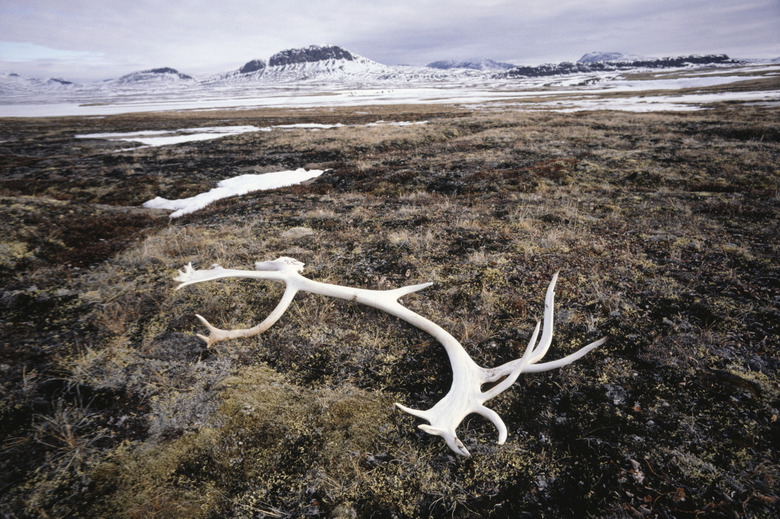Does The Tundra Have Rain?
Chilly, treeless, and expansive — tundra is the coldest biome, or climatic region, on Earth. A tundra definition includes extreme temperatures, low diversity among native plants, and short periods for organisms' growth and reproduction. Tundra appears like a flat plain or mountainside punctuated by streams and scrubby vegetation.
The two types of tundra, Arctic and Alpine, enjoy little precipitation over the course of a year. Despite the lack of tundra precipitation and tundra rainfall, the ground of the Arctic tundra, however, is often wet due to the layer of permafrost just inches under the soil.
Types and Locations
Types and Locations
Arctic tundra, occupying a swath of the Northern Hemisphere, circles the North Pole and extends south into northern Canada, Russia, Alaska, and Scandinavia. Temperatures vacillate between an average of negative 34 degrees Celsius (negative 30 degrees Fahrenheit) in winter and between about 3 and 12 degrees Celsius (37 and 54 degrees Fahrenheit) in summer.
Alpine tundra exists above the treeline, at elevations of 3,353 to 3,505 meters (11,000 to 11,500 feet) above sea level, all over the world — for example, in the European Alps and North America's Rocky Mountains. Temperature averages do not vary as much as in Arctic tundra, though nighttime temperatures are usually below freezing.
Tundra Precipitation
Tundra Precipitation
Both Arctic and Alpine tundra climate is cold deserts. Annual tundra rainfall in the Arctic type averages only 15 to 25 centimeters (6 to 10 inches), but the frozen ground and poorly draining soil collect much of the rain in boggy pools and shallow lakes. Alpine tundra experiences more rain and snow — 84 to 102 centimeters (33 to 40 inches) — but the buffeting winds and low air humidity cause the precipitation to evaporate quickly. Rocky soils in the Alpine tundra biome drain excess water more easily.
Ecology
Ecology
The dissimilar amounts of tundra rain in Arctic and Alpine tundra biomes mean different flora and fauna. The Arctic landscape consists of clumps tundra plants like low shrubs, lichens, mosses, and grasses. Despite the lack of tree cover, these northern regions teem with wildlife.
Apex predators like polar bears and wolves, herbivores like caribou, hare and lemming, and dozens of species of migratory birds make the Arctic tundra climate their habitat. Alpine tundra plants are characterized by brilliant blooming wildflowers in spring. Low-lying mosses, grasses, and sedges are common, but woody tundra plants are rare. Endemic species include small mammals like pika and marmot, mountain goats and elk.
Tundra Rainfall and Precipitation Effects
Tundra Rainfall and Precipitation Effects
Researchers predict that the planet's changing climate will lead to changed tundra climate and increased tundra precipitation, but the plants in these regions may be able to withstand the additional rain and snow.
A study published in 2012 doubled the average precipitation in a controlled environment for one set of Arctic plants native to Siberia and another set of Alpine plants native to northern Sweden. The additional precipitation caused more growth in the Arctic tundra plants, but no change in the Alpine tundra plants, corroborating the results of similar studies. The researchers concluded that "tundra plant productivity is, at least in the short or medium term, largely irresponsive to experimentally increased summer precipitation."
Cite This Article
MLA
Long, Kat. "Does The Tundra Have Rain?" sciencing.com, https://www.sciencing.com/tundra-rain-5006/. 30 July 2019.
APA
Long, Kat. (2019, July 30). Does The Tundra Have Rain?. sciencing.com. Retrieved from https://www.sciencing.com/tundra-rain-5006/
Chicago
Long, Kat. Does The Tundra Have Rain? last modified March 24, 2022. https://www.sciencing.com/tundra-rain-5006/
